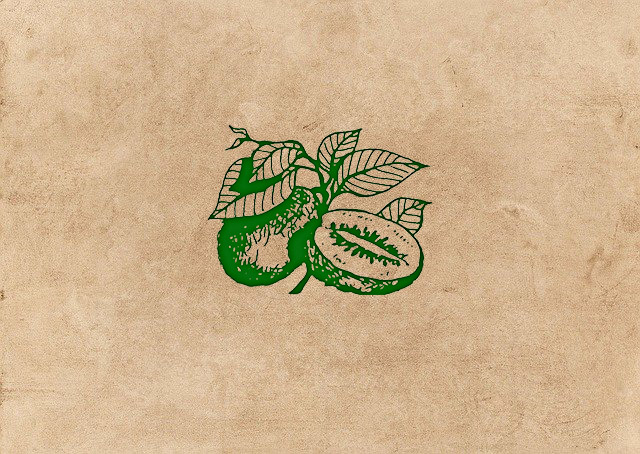Avocado Maintenance Schedule
Avocado Maintenance Schedule: Example only
Var: Hass (A)may-dec; Sharwill (B)may-sept; Pinkerton (A)may-aug; Fuerte (B)april-july; Sheppard (B) march-may
Height: 10-12m Width: 6m Spacing: 7m
Soil Conditions and Requirements: The root structure is basically one tap root with well developed major roots which give support to the large trees in deep soils, however as there are few fine hair rots they are not very efficient in uptake of water and suffer from under watering. They are also very susceptible to root rot (Phytophthora cinnamomii) which occurs mostly in soils that are prone to waterlogging. They therefore require free-draining soils ideally to a depth of 2m. Soils with a pH range of 5-6, that have a naturally high fertility with high organic matter and calcium are desirable. Give them the best soil conditions in your orchard area.
Climatic Notes: The avocado generally is adaptable to a wide climatic range, the varieties listed above have a good cold tolerance however as a young tree they are susceptible to frost and wind damage. The mature trees at flowering and fruit set are affected by excessive rainfall and hot and dry wind conditions.
Site Requirements: Good soil conditions, and wind protection
Planting Notes: Plant in spring to early summer. Soils that call for additions such as gypsum, lime, sand etc. to improve the drainage are generally not suitable for avocados. However with the right preparations and mounding are beneficial in marginal conditions. Preparing the soil with a leguminous green manure crop (such as cow pea or vetch is definitely advantageous to improve the soil drainage). Tractor cultivation should be limited to deep ripping when the soil is dry to avoid compaction.
Planting sites to a diameter of 2 metres should be prepared with 20 L of chicken manure or 50L of cow manure. 2-3 months prior to planting. Applications of lime / dolomite / rock phosphate and blood and bone are also beneficial depending on the natural soil nutrient level.
Water the plants and the holes well, two days prior to planting and ensure that the potting mix is thoroughly wet through. On removing the pot the potting mix can be gently broken free to expose the external roots. Be very careful not to damage the roots. Place the tree in the hole and gently press the soil between the roots. When the hole is 2/3 full, apply 10L of water to further wash the soil into the root system. The fill up the hole and apply a further 10L of water.
Protect the tree from wind and sun with individual tree guards (hessian or shade cloth) when young. The trunk is particularly susceptible to sunburn and needs protection until the tree forms a canopy. It is recommended to paint the trunk and branches with a water based white paint to avoid sunburn. Alfoil or sisalation can also be wrapped around the trunk to protect it against sunburn.
Fertilizer: Nitrogen requirements are the main consideration. Nitrogen applications are best applied before the mid summer flush. Very little needs to be supplied before flowering and before the early spring flush. Nitrogen in the form of manure should be applied in small amounts in December, increasing in January and February with smaller amounts again in March.
Young trees (up to 4 years old) can be fertilised with a n equivalent to 15N:5P:10K fertilizer at rates of about 450g for each year. After four years of age the amount can be increased to 13N:2P:14K mix at about 1 kg per tree. This application should be spread out at 10% in December, 40% in January, 40% in February and 10 in March. A general balance of other elements is easily maintained. Organic applications can be translated to around 3L of chicken manure and 20g or muriate of potash per tree per year and is best applied in conjunction with coarse mulch to control the onset of Phytophthora. The fertiliser program should be adjusted based on visual assessment of the tree vigour. When the trees are slow growing or yellow the fertiliser should be increased.
Maintenance: Due to the poor root system of avocados wilting in hot weather is difficult to avoid. Ideally under tree sprinklers are recommended to cover 60% of the root area of each tree. (Reaching 8-10m in diameter at maturity) Young trees require water twice per week in the growing season to maintain growth. The aim is to produce vegetative growth in the summer and hold the tree back in the spring period. Water should in fact be restricted from Autumn onwards until flowering, to offset the vegetative growth in this period. Irrigation can be increased from November onwards throughout the summer period. The maximum water quantity per week for a 4-year old tree is 750L per week. (Autumn and Winter rates should be about 1/3 of this amount) Tensiometers set to a depth of 20 cm as a young tree and 60cm as a mature tree will assist in determining the water requirements.
Training: The aim is to produce a symmetrical tree with a well-balanced spread of branches. Newly planted spindly trees can be headed to force side shoots. Inward growing branches and water suckers should be removed. Other than that the tree should not be touched. As a mature tree the tree can be heavily pruned or even skeletonised but will usually not return to fruit for 2-3 years.
Pests and Diseases: The following are pests and diseases common to Avocados. Qld Fruit Fly, Fruit Spotting Bug, Latania Scale, Red Shouldered Beetle (monalepta) Avocado Leaf Roller, Phytophthora cinnamomii, Sun Blotch, Verticillium Wilt, and Fruit Rots.
*Please note that this schedule is an example only and should not be considered accurate for all circumstances














